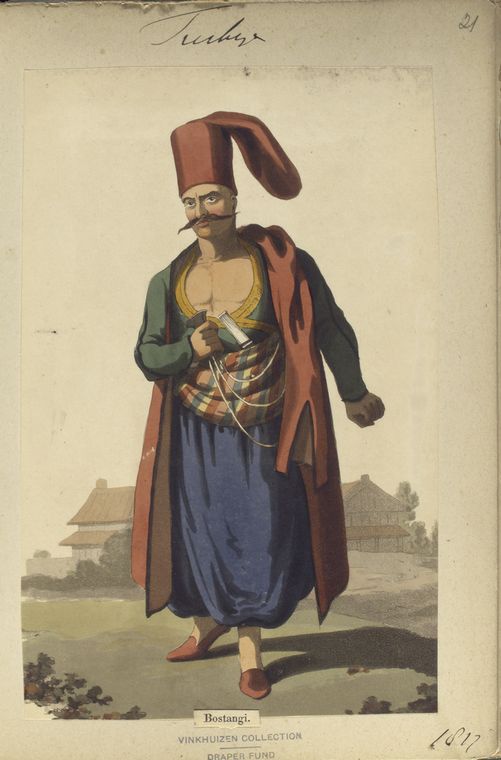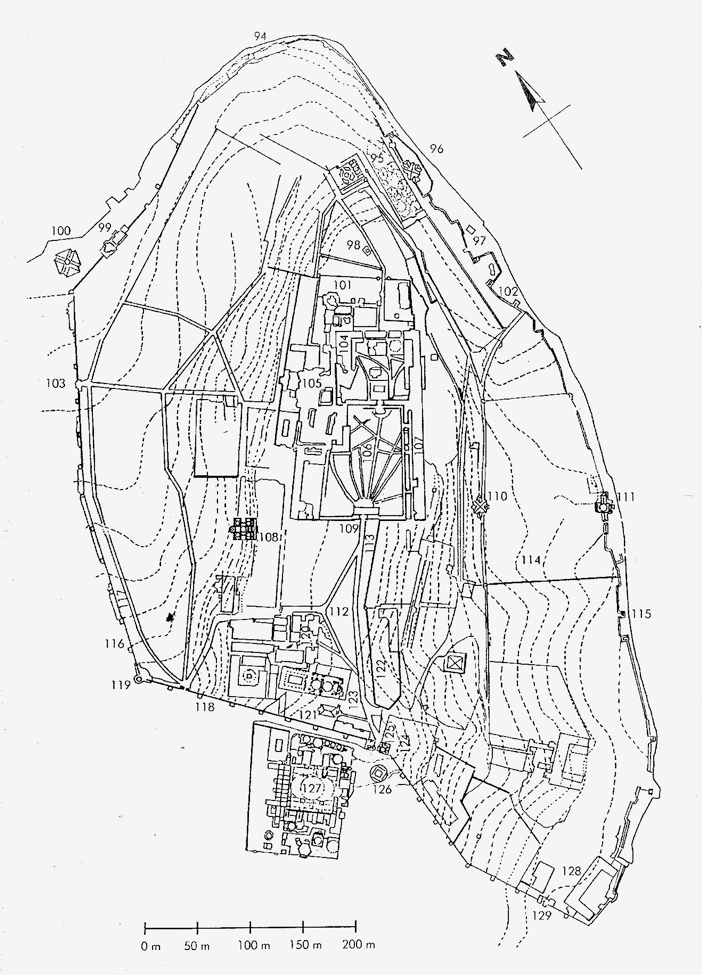The Ottoman Empire’s Life-or-Death Race
Custom in the Ottoman Empire mandated that a condemned grand vizier could save his neck if he won a sprint against his executioner
/https://tf-cmsv2-smithsonianmag-media.s3.amazonaws.com/filer/Ottoman_race_header.jpg)
The executioners of the Ottoman Empire were never noted for their mercy; just ask the teenage Sultan Osman II, who in May 1622 suffered an excruciating death by “compression of the testicles”–as contemporary chronicles put it–at the hands of an assassin known as Pehlivan the Oil Wrestler. There was reason for this ruthlessness, however; for much of its history (the most successful bit, in fact), the Ottoman dynasty flourished—ruling over modern Turkey, the Balkans and most of North Africa and the Middle East—thanks in part to the staggering violence it meted out to the highest and mightiest members of society.
Seen from this perspective, it might be argued that the Ottomans’ decline set in early in the 17th century, precisely at the point when they abandoned the policy of ritually murdering a significant proportion of the royal family whenever a sultan died, and substituted the Western notion of simply giving the job to the first-born son instead. Before then, Ottoman succession had been governed by the “law of fratricide” drawn up by Mehmed II in the middle of the 15th century. Under the terms of this remarkable piece of legislation, whichever member of the ruling dynasty succeeded in seizing the throne on the death of the old sultan was not merely permitted, but enjoined, to murder all his brothers (together with any inconvenient uncles and cousins) in order to reduce the risk of subsequent rebellion and civil war. Although it was not invariably applied, Mehmed’s law resulted in the deaths of at least 80 members of the House of Osman over a period of 150 years. These victims included all 19 siblings of Sultan Mehmed III—some of whom were still infants at the breast, but all of whom were strangled with silk handkerchiefs immediately after their brother’s accession in 1595.
For all its deficiencies, the law of fratricide ensured that the most ruthless of the available princes generally ascended to the throne. That was more than could be said of its replacement, the policy of locking up unwanted siblings in the kafes (“cage”), a suite of rooms deep within the Topkapi palace in Istanbul. From around 1600, generations of Ottoman royals were kept imprisoned there until they were needed, sometimes several decades later, consoled in the meantime by barren concubines and permitted only a strictly limited range of recreations, the chief of which was macramé. This, the later history of the empire amply demonstrated, was not ideal preparation for the pressures of ruling one of the greatest states the world has ever known.
For many years, the Topkapi itself paid mute testimony to the grand extent of Ottoman ruthlessness. In order to enter the palace, visitors had first to pass through the Imperial Gate, on either side of which were two niches where the heads of recently executed criminals were always on display. Inside the gate stood the First Court, through which all visitors to the inner portions of the palace had to pass. This court was open to all the sultan’s subjects, and it seethed with an indescribable mass of humanity. Any Turk had the right to petition for redress of his grievances, and several hundred agitated citizens usually surrounded the kiosks at which harassed scribes took down their complaints. Elsewhere within the same court stood numerous armories and magazines, the buildings of the imperial mint and stables for 3,000 horses. The focal point, however, was a pair of “example stones” positioned directly outside the Central Gate, which led to the Second Court. These “stones” were actually marble pillars on which were placed the severed heads of notables who had somehow offended the sultan, stuffed with cotton if they had once been viziers or with straw if they had been lesser men. Reminders of the sporadic mass executions ordered by the sultan were occasionally piled up by the Central Gate as additional warnings: severed noses, ears and tongues.
Capital punishment was so common in the Ottoman Empire that there was a Fountain of Execution in the First Court, where the chief executioner and his assistant went to wash their hands after decapitating their victims—ritual strangulation being reserved for members of the royal family and their most senior officials. This fountain “was the most feared symbol of the arbitrary power of life and death of the sultans over their subjects, and was hated and feared accordingly,” the historian Barnette Miller wrote. It was used with particular frequency during the reign of Sultan Selim I—Selim the Grim (1512-20)—who, in a reign of eight short years, went through seven grand viziers (the Ottoman title for a chief minister) and ordered 30,000 executions. So perilous was the position of vizier in those dark days that holders of the office were said not to leave their homes in the morning without tucking their wills inside their robes; for centuries afterward, Miller points out, one of the most common curses uttered in the Ottoman Empire was “Mays’t thou be vizier to Sultan Selim!”
Given the escalating demands of the executioner’s job, it seems remarkable that the Turks employed no specialist headsman to tackle the endless round of loppings, but they did not. The job of executioner was held instead by the Sultan’s bostancı basha, or head gardener—the Ottoman corps of gardeners being a sort of 5,000-strong bodyguard that, aside from cultivating the Sultan’s paradise gardens, doubled up as customs inspectors and police officers. It was the royal gardeners who sewed condemned women into weighted sacks and dropped them into the Bosphorus—it is said that another Sultan, Ibrahim the Mad (1640-48), once had all 280 of the women in his harem executed this way simply so he could have the pleasure of selecting their successors—and the tread of an approaching group of bostancıs, wearing their traditional uniform of red skull caps, muslin breeches and shirts cut low to expose muscular chests and arms, heralded death by strangulation or decapitation for many thousands of Ottoman subjects down the years.

A bostancı, or member of the Ottoman corps of gardener-executioners. The artist, a European who worked from travelers' accounts, has incorrectly shown him wearing a fez rather than the traditional skull cap.
When very senior officials were sentenced to death, they would be dealt with by the bostancı basha in person, but—at least toward the end of the sultans’ rule—execution was not the inevitable result of a death sentence. Instead, the condemned man and the bostancı basha took part in what was surely one of the most peculiar customs known to history: a race held between the head gardener and his anticipated victim, the result of which was, quite literally, a matter of life or death for the trembling grand vizier or chief eunuch required to undertake it.
How this custom came about remains unknown. From the end of the eighteenth century, however, accounts of the bizarre race began to emerge from the seraglio, and these seem reasonably consistent in their details. Death sentences passed within the walls of the Topkapi were generally delivered to the head gardener at the Central Gate; and Godfrey Goodwin describes the next part of the ritual thus:
It was the bostancibaşi‘s duty to summon any notable.… When the vezir or other unfortunate miscreant arrived, he well knew why he had been summoned, but he had to bite his lip through the courtesies of hospitality before, at long last, being handed a cup of sherbet. If it were white, he sighed with relief, but if it were red he was in despair, because red was the color of death.
For most of the bostancıs’ victims, the sentence was carried out immediately after the serving of the fatal sherbet by a group of five muscular young janissaries, members of the sultan’s elite infantry. For a grand vizier, however, there was still a chance: as soon as the death sentence was passed, the condemned man would be allowed to run as fast as he was able the 300 yards or so from the palace, through the gardens, and down to the Fish Market Gate on the southern side of the palace complex, overlooking the Bosphorus, which was the appointed place of execution. (On the map below, which you can view in higher resolution by double clicking on it, the Central Gate is number 109 and the Fish Market Gate number 115.)

A plan of the vast Topkapi Palace complex in Istanbul, from Miller's Beyond the Sublime Porte. Click to view in higher resolution.
If the deposed vizier reached the Fish Market Gate before the head gardener, his sentence was commuted to mere banishment. But if the condemned man found the bostanci basha waiting for him at the gate, he was summarily executed and his body hurled into the sea.
Ottoman records show that the strange custom of the fatal race lasted into the early years of the nineteenth century. The last man to save his neck by winning the life-or-death sprint was the Grand Vizier Hacı Salih Pasha, in November 1822. Hacı—whose predecessor had lasted a mere nine days in office before his own execution—not only survived his death sentence, but was so widely esteemed for winning his race that he went on to be appointed governor general of the province of Damascus.
After that, though, the custom languished, along with the empire itself. The Ottomans barely saw out the 19th century, and when the Turkish state revived, in the 1920s under Kemal Atatürk, it did so by turning its back on almost everything the old empire had stood for.
Sources
Anthony Alderson. The Structure of the Ottoman Dynasty. Oxford: Clarendon Press, 1956; Joseph, Freiherr von Hammer-Purgstall. Des Osmanischen Reichs: Staatsverfassung und Staatsverwaltung. Vienna, 2 vols.: Zwenter Theil, 1815; I. Gershoni et al, Histories of the Modern Middle East: New Directions. Boulder : Lynne Rienner Publishers, 2002; Geoffrey Goodwin. Topkapi Palace: an Illustrated Guide to its Life and Personalities. London: Saqi Books, 1999; Albert Lybyer. The Government of the Ottoman Empire in the Time of Suleiman the Magnificent. Cambridge : Harvard University Press, 1913; Barnette Miller. Beyond the Sublime Porte: the Grand Seraglio of Stambul. New Haven : Yale University Press, 1928; Ignatius Mouradgea D’Ohsson. Tableau Général de l’Empire Ottoman. Paris, 3 vols., 1787-1820; Baki Tezcan. The Second Ottoman Empire: Political and Social Transformation in the Early Modern World. New York: Cambridge University Press, 2010.
/https://tf-cmsv2-smithsonianmag-media.s3.amazonaws.com/accounts/headshot/mike-dash-240.jpg)


/https://tf-cmsv2-smithsonianmag-media.s3.amazonaws.com/accounts/headshot/mike-dash-240.jpg)